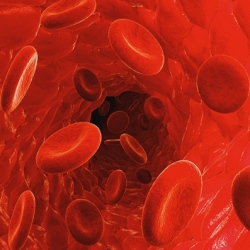
In healthcare time is life and speed is king. Developing improved diagnostics that can quickly discern whether a patient has had a myocardial infarction or heart attack, is imperative for physicians to move forward with the appropriate treatment course for patients that present with heart attack symptoms.
Now, investigators at the University of Texas (UT) Southwestern Medical Center have published new data assessing a novel test that can rule out heart attacks three times faster than conventional methods. Findings from the new study were published recently in Circulation through an article titled “Evaluation of a Novel Rule-Out Myocardial Infarction Protocol Incorporating High-Sensitivity Troponin T in a US Hospital.”
In the current study, a new high-sensitivity blood test for cardiac troponin, given in a hospital emergency room, was also found to be safe and effective. When patients present to emergency rooms with heart attack symptoms, doctors assess them in part by using a cardiac troponin test to measure a protein released into the blood when the heart is damaged.
“An observational study of unselected patients undergoing MI rule-out was performed to evaluate the safety of the protocol and its potential impact on patient disposition,” the authors wrote. “The proportion of patients who would have been eligible for early rule-out with the new protocol incorporating hs-cTnT was compared with existing practice in which the conventional fourth-generation cTnT assay was tested at baseline and ≥3 hours after presentation. The negative predictive value was calculated to assess safety.”
The hs-cTnT protocol is already used in Europe and has been recently approved by the FDA. The UT Southwestern researchers developed a procedure for assessing the results of the new test and compared it to existing practice using a conventional troponin test, which takes three hours to complete. Study participants were 536 patients admitted to an emergency room with heart attack symptoms, including chest pains and shortness of breath.
“We did not miss any heart attacks using this test in this population," notes lead study investigator Rebecca Vigen, M.D., a cardiologist at the UT Southwestern Medical Center. "The test also allowed us to determine faster that many patients who had symptoms of a heart attack were not having a heart attack than if we had relied on the traditional test."
The new procedure successfully "ruled out" 30% of patients immediately and an additional 25% at one hour. By three hours, the new procedure ruled out heart attack in 83.8% of patients compared with 80.4% using the conventional test.
“In this cohort (N=536, mean age 55 years, 44% women), the final adjudicated diagnosis was MI in 2.1%, unstable angina in 0.4%, and nonischemic myocardial injury in 17.0%,” the authors penned. “With the conventional assay, 80.4% of patients ruled out for MI at 3 hours. With the new hs-cTnT protocol, 83.8% ruled out by 3 hours, including 30.0% at baseline, 24.8% at 1 hour, and 28.9% at 3 hours. Compared with 19.6% of patients considered abnormal by the conventional assay, 16.2% of patients were abnormal under the new protocol (P=0.03; McNemar’s test).”
"We anticipate that this procedure will allow many patients with chest pain to be given a ‘yes’ or ‘no’ diagnosis of whether they are having a heart attack faster," Dr. Vigen concludes.
